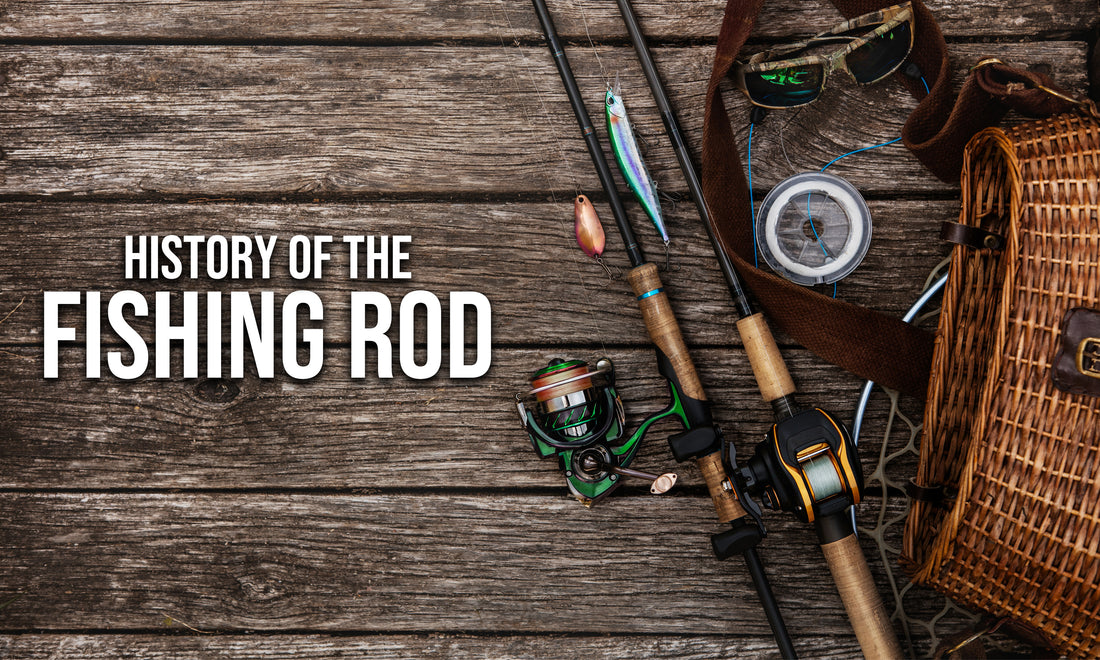The earliest humans settled around water for good reason. It was necessary for everything from drinking and irrigation to fishing. There are records from around the world showing ancient peoples catching and preparing fish, everywhere from ancient Egypt to the Greeks, Romans, Chinese, and Macedonians.
Early paintings often show devices like harpoons, woven nets, and hooks with artificial flies. But just when did the fishing rod come into the picture?
The first fishing rod
People relied on fish for food long before the invention of the fishing rod, likely catching fish with their bare hands in shallow water or hooking them with spears. The very first fishing rod was likely just a simple stick with some horsehair and an angle tied to it to allow for fishing in deeper water from a boat.
While historians can’t say for sure, some of the earliest known records trace the fishing rod back 4,000 years, to around 2,000 B.C. The first rods were made from wood, usually hazel shoots or bamboo, with lines made from horsehair. Bamboo was popular because of its flexibility, and most rods were around six feet in length.
The switch from function to fun
The first mention of fishing in a recreational capacity comes from the 1496 book The Treatyse of Fysshynge With an Angle by Wynkyn de Worde. In it, a 14-foot rod broken into two sections is described. It even had a hollow bottom for storage. Fishing was still a widely used means for food, but, particularly in the upper echelons of society, fly fishing had evolved into a leisurely activity.

The difference between a rod and a pole
While some may use the terms ‘fishing rod’ and ‘fishing pole’ interchangeably, there is a difference. A fishing pole is a simple stick from which a line is suspended. The most common materials include carbon fiber, fiberglass, and bamboo.
A fishing rod is more sophisticated, fitted with ringed line guides along the length and a reel to store the line. Rods, thanks to their jointed designs, can range in length from 6 to 24 feet.
Fishing rods throughout the centuries
As fishing grew in popularity, improvements to the fishing rod started to appear.
The 1600s
This century represented some huge improvements to fishing. A loop of wire was attached at the end of the rods, which meant fishermen could have a running line. Running lines are essential for things like casting and successfully drawing in a hooked fish.
In addition, the fishing reel made its first appearance. Simple in design, it was a wooden spool combined with a metal ring that would fit on the fisherman’s thumb. Rods could also now be taken apart and more easily transported from place to place.
Handles were made from materials like wrapped cane, wood, or cork to provide a better grip. Some rods even doubled as walking sticks that could be converted to fishing rods once the river or lake was reached.

The 1700s
The fishing rod developed even further, and now included a guide along its length to help the line. Reels continued to undergo more refinements and were more efficient. New materials for rods, like lancewood, were introduced, though bamboo was still a popular choice.
Fishing rods were also much longer than their original six-foot ancestors with some measuring 16 to 18 feet in length. The longer lengths also meant the rods had more joints, up to six, to allow for easy transport and storage.
Fun Fact: In this century, fishing rods are still largely made by the anglers and fishermen themselves, though tackle shops are making and selling them.
The 1800s
An emphasis was placed on strengthening rods. Several strips of pliable bamboo were glued together, creating a thinner and stronger rod. Lines changed from horsehair to silk coated with linseed oil, which allowed for longer and smoother casting.
In stark contrast to the 1700s, most anglers no longer make their own rods.

The 1900s
Fishing starts to resemble the sport we know and love today. Rods saw their most forward-thinking advancements yet and were constructed from fiberglass. This improved the quality and strength of the joints. Reels were now spin-casting, and nylon monofilament lines hit production.
In the 1960s, rods made from carbon fiber were all the rage. Carbon fiber allowed for a lighter, yet much stronger, rod. Lures were starting to be made from plastic, replacing wood, which allowed for a greater and more vibrant range of options.
The modern fishing rod
Today, rods can be customized to nearly any specification and made from a range of traditional and manufactured materials. The ideal rod has a taper from butt to tip, tight joints, and is made from a strong yet flexible material to prevent breaking. Fishing rods are classified by the weight of the line needed to flex a rod that’s fully loaded.
Thanks to these marvels in engineering, fishing has evolved from a simple means of providing a family meal to a sport and leisure activity enjoyed worldwide.

